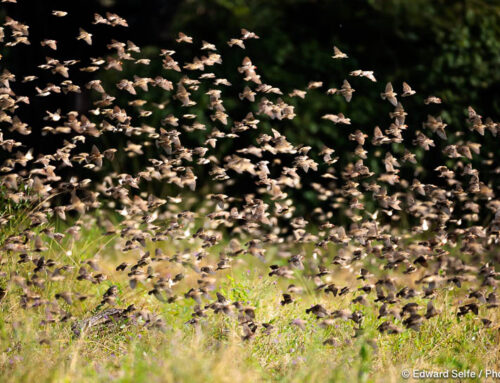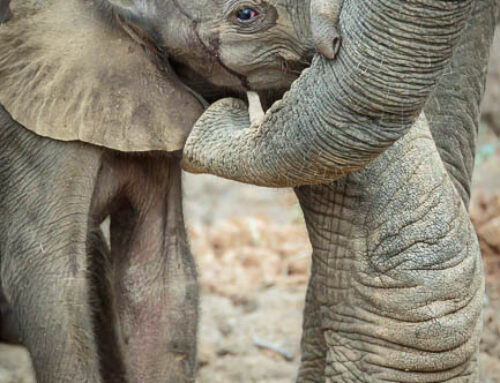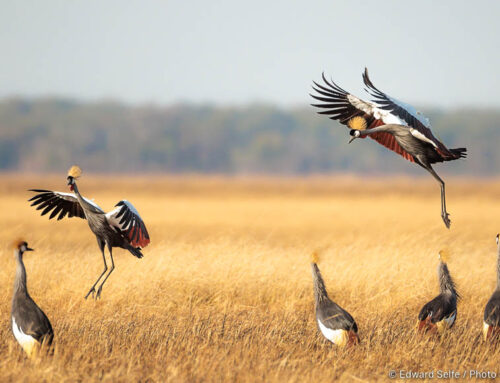Nature’s cruel. We’ve all heard it many times. But the constant pursuit of improvement through the process of natural selection means that lots of animals don’t make it to adulthood, and certainly don’t have the chance to breed. What’s unusual about this story is that it concerns a very young elephant calf, an animal that we think of as perfectly safe, protected by its extended family.
Recently, one of our guides followed a gyre of circling vultures which he assumed meant that someone had made a kill nearby. He followed the vultures to an open area of mopane stumps and combretum thicket. What he found was far from what he expected!
Lying in the sand was a small elephant calf, surrounded by the rest of the herd. One of the females was covered in blood at her back end, suggesting that she had just given birth to the small calf. The smell of blood had attracted vultures (we regularly see vultures at the site of fresh births as they come to eat the afterbirth) and they were congregating nearby hoping to gain access. The elephants were throwing dust over the calf, and the rest of the herd we standing in a circle around the two of them, fighting off the vultures. The female was prodding the calf regularly with her foot and trunk, presumably trying to rouse it.
I arrived at this point, and we watched as the female used first her trunk and then her foot to test for signs of life. It’s not unusual to see small elephant calves lying down under their mother’s body for shade, so until this point, we weren’t concerned about it. But once the mother had checked for signs of life, and had no response, we had to assume that it had been still-born or died very soon afterwards. We weren’t surprised to see the female using her trunk to test for breathing and heartbeat, but the foot was more interesting – recent research from Namibia suggests that elephants can use their feet to sense for vibrations in the soil, and this observation would support that theory.
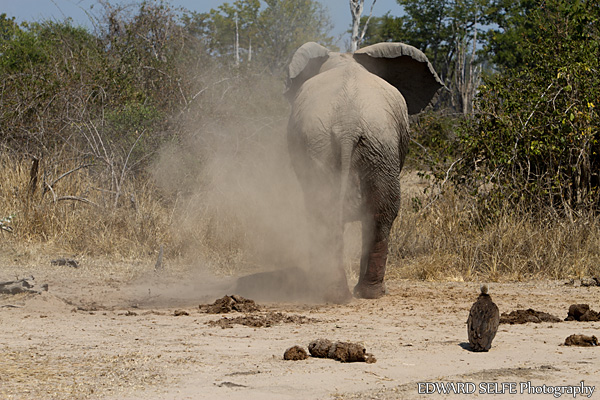
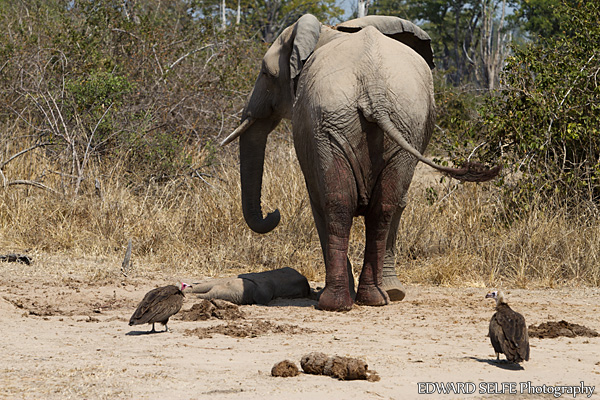
After a while, the rest of the herd began to move off, standing a few metres away leaving the female to guard her calf. She stood over it, shading it from the midday sun and covering it in sand (to conceal the smell from the vultures and scavengers) for the rest of the day.
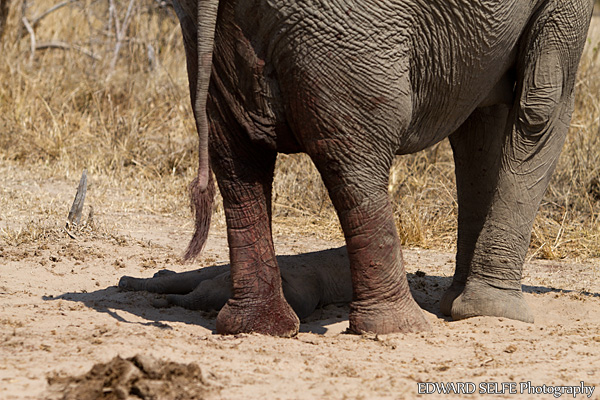
I returned later in the day and the elephants had all moved off leaving the calf on its own in the sand. Interestingly, the herd’s attempts to drive off the scavengers had been successful as there was not a hyaena or vulture in sight; just the calf, half covered in sand in the evening light.
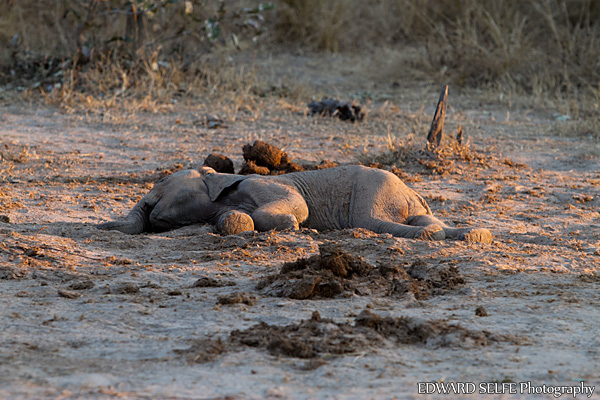
I had a closer look at the body of the elephant to see if I could work out why it had died. There was no sign of anything unusual, and it looked well formed (if anything, it looked very large for a new-born calf). The eyes were a bit odd but nothing serious enough to bring about an early death I don’t think.
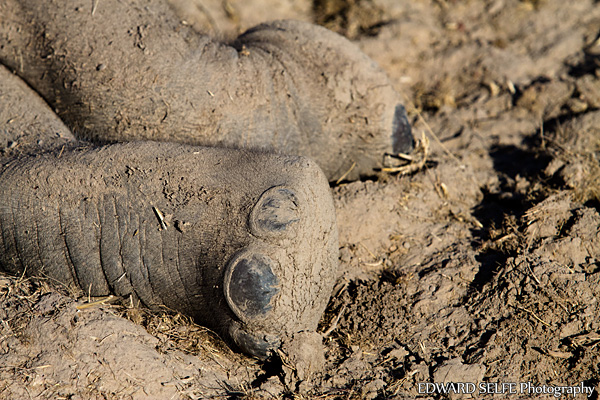
I returned again the following morning, and once more, there was no change to the situation. The calf was lying in the same spot, but there was slight damage to its stomach area; the only spoor I could find nearby was that of Civet, which are known to scavenge.
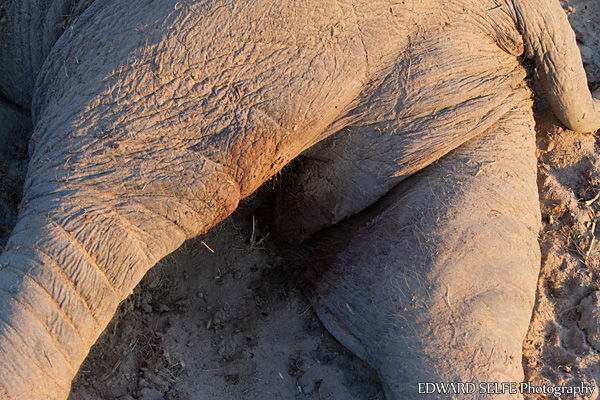
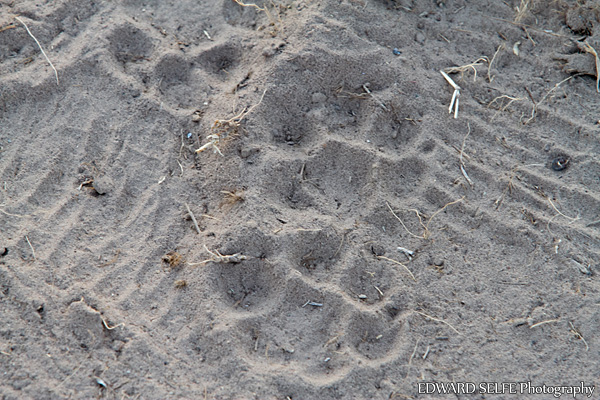
I wondered why it had taken nearly 24 hours for the carcass to be discovered. But then I thought about how carcasses usually decompose and it is the stomach contents fermenting and bloating the body which we notice first. Since this calf was new-born, I suspect it had not even ingested any milk, meaning there would be nothing to ferment inside so the body remained intact.
It’s thought that over 10% of elephant calves die in their first year and this rises to 30% if the calf is born to a female which is less than 20 years old, showing the importance of age and experience. We often think of elephant calves as being the ‘safest’ babies in the animal kingdom, but it seems that they are subject to the same selection pressures as all other creatures.

